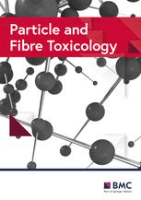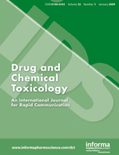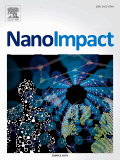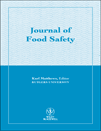
Mycotoxin Research
Scope & Guideline
Connecting Science and Safety in Mycotoxin Studies
Introduction
Aims and Scopes
- Mycotoxin Detection and Analysis:
Research focusing on the development and validation of methods for detecting and quantifying mycotoxins in food and feed, utilizing advanced analytical techniques such as LC-MS/MS and immunoassays. - Health Risk Assessment:
Studies assessing the health risks associated with mycotoxin exposure in humans and animals, including epidemiological studies and biomonitoring approaches. - Mycotoxin Management Strategies:
Exploration of various strategies for mycotoxin prevention and detoxification in food and feed, including natural solutions, processing methods, and feed additives. - Environmental and Climatic Influences:
Research examining the effects of environmental factors and climate change on mycotoxin production and contamination in agricultural products. - Toxicological Mechanisms:
Investigations into the cellular and molecular mechanisms of mycotoxin toxicity, including studies on oxidative stress, apoptosis, and immune responses. - Emerging Mycotoxins and New Findings:
Focus on newly identified mycotoxins and their biological effects, along with the occurrence of modified mycotoxins in various food products.
Trending and Emerging
- Multi-Mycotoxin Occurrence:
There is an increasing focus on the simultaneous occurrence of multiple mycotoxins in various food products and animal feeds, highlighting the complexity of contamination and the need for comprehensive risk assessments. - Natural Detoxification Methods:
Research is trending towards exploring natural solutions for detoxifying mycotoxins, such as the use of plant extracts and probiotics, which align with growing consumer interest in food safety and health. - Mycotoxin Impact on Human Health:
Emerging studies are emphasizing the health impact of mycotoxins, particularly in vulnerable populations, with research on dietary exposure, biomarkers, and long-term health effects gaining prominence. - Technological Innovations in Detection:
The development of rapid and sensitive detection methods for mycotoxins, such as LA-REIMS and advanced chromatography techniques, is becoming a significant theme, reflecting the need for timely monitoring in food safety. - Climate Change Impacts:
Research examining the effects of climate change on mycotoxin production and contamination patterns is gaining traction, indicating a growing recognition of environmental factors in mycotoxin research.
Declining or Waning
- Fungal Diversity Studies:
Research specifically focused on the diversity of mycotoxigenic fungi has decreased, possibly due to a shift towards understanding their ecological roles and interactions rather than just cataloging species. - Historical Mycotoxin Incidents:
Publications centered around historical case studies of mycotoxin contamination incidents have become less frequent, indicating a possible shift towards proactive prevention strategies rather than reactive analysis. - Basic Toxicological Studies:
There appears to be a decline in basic toxicological studies that do not connect to broader health implications or management strategies, as researchers increasingly focus on applied research with immediate relevance.
Similar Journals

Toxicology Communications
Innovating research for a toxic-free future.Toxicology Communications is a vital academic journal published by Taylor & Francis Ltd, focusing on the critical field of toxicology. Established as an Open Access journal since 2017, it provides researchers, professionals, and students unrestricted access to significant findings in toxicological sciences, promoting global collaboration and knowledge sharing. The journal aims to disseminate innovative research, reviews, and case studies that explore the effects of chemical, biological, and physical agents on human health and the environment. With its commitment to high-quality publications, Toxicology Communications plays an essential role in advancing our understanding of toxicological phenomena and fostering safe practices across various industries. This makes it an invaluable resource for anyone dedicated to the studies of toxins and their environmental and health implications.

REVISTA CIENTIFICA-FACULTAD DE CIENCIAS VETERINARIAS
Fostering innovation in veterinary and agricultural research.REVISTA CIENTIFICA-FACULTAD DE CIENCIAS VETERINARIAS, published by the Universidad del Zulia, is a prominent open-access journal dedicated to advancing the fields of veterinary science, animal science, and food science. Since its inception in 1997, the journal has served as a vital platform for disseminating quality research and fostering academic dialogue among professionals and scholars in the veterinary and agricultural sectors. With its commitment to open access since 2010, the journal aims to make valuable research freely accessible to a global audience, thereby contributing to the advancement of scientific knowledge. Although currently categorized in the bottom quartile of various fields—including Animal Science and Zoology, Food Science, and Immunology—REVISTA CIENTIFICA-FACULTAD DE CIENCIAS VETERINARIAS is dedicated to nurturing innovative research that addresses pressing challenges in veterinary and related sciences. Researchers, professionals, and students will find this journal to be an important resource for quality studies that have implications for animal health, food safety, and biotechnology in the context of Venezuelan and international landscapes.

INDIAN JOURNAL OF MICROBIOLOGY
Shaping the Future of Microbiology ResearchINDIAN JOURNAL OF MICROBIOLOGY, published by Springer, serves as a vital platform for the dissemination of cutting-edge research in the field of microbiology. With an ISSN of 0046-8991 and an E-ISSN of 0973-7715, this esteemed journal invites contributions that span various disciplines within microbiology, encompassing both fundamental studies and applied research that can impact health, environment, and industry. Recognized in the Q3 category in Microbiology for 2023, and ranking #80 out of 182 in Scopus’ Microbiology category, it reflects its commitment to quality and significance in the academic community. Authors and researchers benefit from the journal's comprehensive review process, which enhances the visibility and reach of their work. While no open access options are currently offered, the INDIAN JOURNAL OF MICROBIOLOGY remains a premier choice for those aiming to contribute to the ongoing dialogue in microbiological studies, ensuring that knowledge continues to evolve and thrive.

Particle and Fibre Toxicology
Exploring the intricate world of toxicology.Particle and Fibre Toxicology is a leading open-access journal dedicated to advancing the field of toxicology, specifically focusing on the health impacts of particulate matter and fibers. Published by BMC since 2004, this journal operates from its offices in the United Kingdom and has gained significant recognition in the scientific community, achieving an impressive impact factor that highlights its relevance and influence. As indicated by its Q1 ranking in various categories including Health, Toxicology and Mutagenesis and Medicine (miscellaneous), it occupies a prestigious position in the academic landscape, appealing to researchers, professionals, and students alike. With a Scopus ranking of #4 in Toxicology and #7 in Environmental Science, the journal ensures high visibility and accessibility, providing a platform for the dissemination of key research findings and innovative methodologies in the interdisciplinary domains of toxicology. Through its commitment to open access, Particle and Fibre Toxicology fosters knowledge-sharing and collaboration, facilitating significant advancements in our understanding of the toxicological effects of environmental agents.

DRUG AND CHEMICAL TOXICOLOGY
Bridging disciplines for safer environments.Drug and Chemical Toxicology is a well-respected journal in the fields of toxicology, pharmacology, and public health, published by Taylor & Francis Ltd. Since its inception in 1978, this journal has diligently explored the effects and mechanisms of chemical exposures on health and the environment, fulfilling a crucial role in advancing scientific understanding and safeguarding public health. The journal is indexed across prestigious databases and features an impressive array of articles categorized within the Q2 and Q3 quartiles across various categories in 2023, reflecting its significance in Chemical Health and Safety as well as Environmental and Occupational Health disciplines. With an extensive reach and a focus on interdisciplinary research, Drug and Chemical Toxicology offers a rich repository of original research, reviews, and methodological advancements, catering to a diverse audience of researchers, professionals, and students dedicated to the betterment of safety and health standards. Although not an open-access publication, its articles are widely accessible to the academic community, ensuring that critical innovations and insights are shared for the greater good.

Food Analytical Methods
To advance the frontiers of food analytical methodologies.Food Analytical Methods, published by Springer, is an esteemed journal dedicated to the innovative field of analytical methodologies within the food sciences. With an ISSN of 1936-9751 and E-ISSN of 1936-976X, this journal serves as a pivotal platform for researchers and professionals to exchange insights, methodologies, and findings related to food quality analysis, safety measures, and innovative technologies in food science. As of 2023, Food Analytical Methods boasts impressive Scopus rankings, including Q2 in Analytical Chemistry and Food Science, positioning it among the top journals in its category. The journal's commitment to enhancing food safety and quality through rigorous research underscores its importance in both academic and industrial applications. Although it does not currently operate under an open-access model, it provides exceptional value through its rigorous peer-review process and comprehensive publication standards, further inviting contributions from both established and emerging scientists in the field. With coverage spanning from 2008 to 2024, this journal continues to address critical research areas, thereby shaping the future of food analytics.

Toxicology Research
Pioneering research in toxicology and mutagenesis.Toxicology Research is a distinguished journal dedicated to advancing the field of toxicology through the dissemination of high-quality research. Published by Oxford University Press, this UK-based journal focuses on critical aspects of toxicology and mutagenesis, highlighting both environmental and pharmacological implications. With an ISSN of 2045-452X and an E-ISSN of 2045-4538, it serves as a valuable resource for researchers, professionals, and students alike. Currently categorized in the Q3 quartile for Health, Toxicology and Mutagenesis, as well as Toxicology in 2023, Toxicology Research maintains a visible presence in Scopus rankings, positioning itself within the targeted professional community. Although the journal operates without open access options, its importance in contributing to scientific discussions and policy formation is undeniable. Covering content from 2012 to 2024, it continues to provide insights into contemporary toxicological challenges, thereby fostering interdisciplinary collaborations and informing best practices in health and safety.

Frontiers in Toxicology
Innovating Insights into Toxicity MechanismsFrontiers in Toxicology, published by Frontiers Media SA, is a prominent open-access journal dedicated to advancing the understanding of toxicological science. Established in 2019, it serves as a vital forum for innovative research, offering insights into the pharmacological impacts and toxicological profiles of various substances. With its international reach based in Switzerland, this journal has quickly ascended in the academic community, achieving a notable Q1 ranking in Pharmacology, Toxicology and Pharmaceutics (Miscellaneous) and a Q2 ranking in Toxicology as of 2023. The journal is indexed in Scopus, where it ranks #8 out of 43 in its primary category, underscoring its influence and relevance in the field. The scope encompasses cutting-edge studies on the mechanisms of toxicity, including both human and environmental impacts, making it an essential resource for researchers, professionals, and students alike. By promoting open access to high-quality research, Frontiers in Toxicology plays a crucial role in enhancing knowledge sharing and fostering collaboration across disciplines.

NanoImpact
Uncovering the Dual Nature of NanomaterialsNanoImpact, published by Elsevier, is a pioneering journal dedicated to advancing the understanding of nanotechnology's impact across various fields such as materials science, public health, environmental safety, and risk management. Launched in 2016, the journal has quickly established itself as a premier outlet for high-quality research, evidenced by its top-tier quartile placements in several categories, including Q1 rankings in Materials Science (Miscellaneous) and Public Health as of 2023. With a significant Scopus ranking, including #34 in Public Health and #12 in Safety, Risk, Reliability, and Quality, NanoImpact aims to foster interdisciplinary collaboration and innovation among researchers and practitioners. As an invaluable resource for both emerging scholars and seasoned professionals, the journal encourages the exploration of both the beneficial and adverse effects of nanomaterials, bridging the gap between scientific inquiry and real-world applications. Access to cutting-edge research insights through this publication is crucial for anyone invested in the future of technology and its societal implications.

JOURNAL OF FOOD SAFETY
Connecting researchers to the pulse of food safety advancements.Journal of Food Safety is a premier resource in the field of food science, offering invaluable insights into food safety practices, microbiology, and parasitology. Published by WILEY, this journal has been a pivotal platform for the dissemination of research since its inception. With an impressive impact factor reflecting its esteemed reputation, the journal caters to a diverse audience of researchers, professionals, and students committed to advancing knowledge in food safety. While currently not an open access journal, it still provides essential findings that contribute significantly to the understanding of foodborne pathogens and preventive measures. Recognized in the Q2 and Q3 quartiles across various relevant disciplines, including Food Science, Microbiology, and Parasitology, the Journal of Food Safety continues to uphold high standards in scientific research and education. Researchers are encouraged to submit their manuscripts and engage with groundbreaking studies that are shaping the future of food safety.